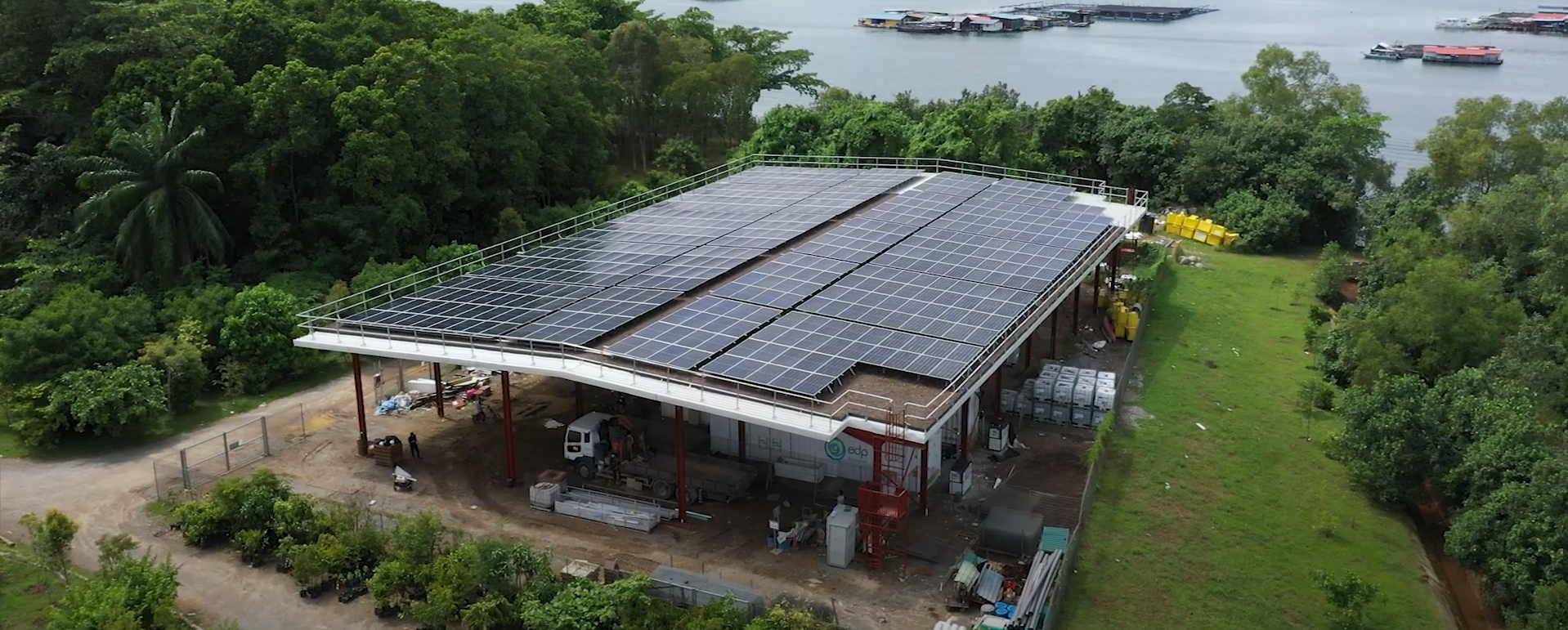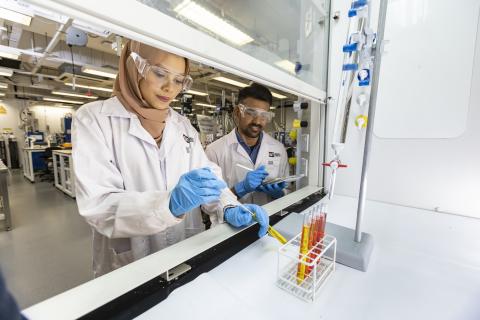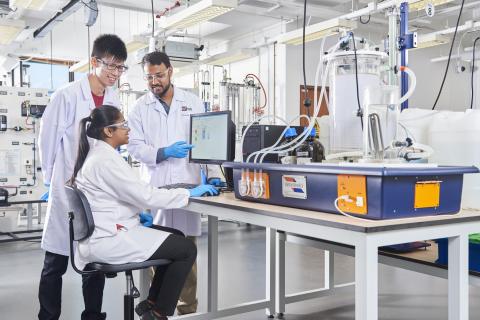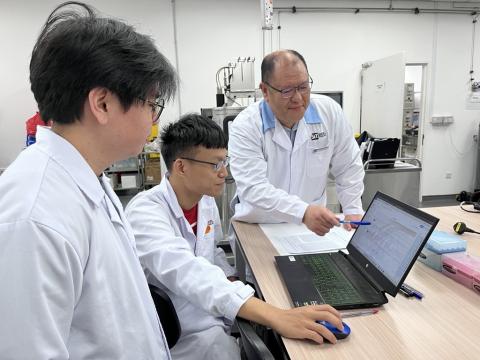The nostalgia and rustic charm of Pulau Ubin are undeniable, yet beneath its tranquil exterior lies a powerful secret: remarkably high-tech energy systems. Thanks to an enhanced green microgrid co-developed by EDP Renewables APAC and SIT researchers, up to 95 per cent of Ubin’s electricity now comes from the sun — cutting carbon emissions, lowering costs, and offering a model for Singapore’s renewable energy journey.
A visit to Pulau Ubin, with its rustic kampung houses and leisurely pace of life, is like stepping back in time. But the island is keeping up with sustainability trends and now derives most of its electricity from solar energy.
Unable to tap on the mainland’s electrical grid, Ubin residents used to depend solely on diesel generators. But since 2013, a self-sufficient electrical network, or microgrid, has been contributing to their energy needs.
Today, up to 95 per cent of the microgrid’s electricity is drawn from the sun.
Solar power is not only greener than diesel, but also cheaper. In 2023, the upgraded microgrid became more efficient and reliable with the installation of a solar green roof and vanadium redox flow batteries.

Over 30 households on Ubin now rely on the microgrid. (Photo: EDP Renewables)
Planning for a Rainy Day
Solar power clearly depends on the weather. A cloudy or rainy day means less light for photovoltaic (PV) cells to convert into energy. On the other hand, if the sun is too bright or the surrounding environment is too hot, PV efficiency will also drop. Greenery planted below the solar panels can improve their efficiency, either by releasing water vapour to absorb heat from the surroundings or shielding the rooftop surfaces from absorbing excess heat. This is also known as a solar green roof, a combined system that integrates solar panels with a green roof (vegetation) to maximise rooftop use.
In early 2022, a team of Singapore Institute of Technology (SIT) researchers — including Associate Professor Elsa Feng Xue, Associate Professor Soh Chew Beng, Associate Professor Steve Kardinal Jusuf, SIT engineering graduate Eryan Bin Zainudin, and Dr Jiang Hao — designed one such solar green roof for use in Pulau Ubin.
This was part of a wider project to enhance the island’s microgrid, which was also boosted with 328 kilowatt-peak (kWp) PV panels and a supporting vanadium redox flow battery system capable of storing one megawatt-hour (MWh) of surplus solar energy. One MWh is equivalent to 1,000 kilowatt-hours (kWh) of electricity — enough to power nearly 83 four-room Housing & Development Board flats for a day.
A/Prof Feng and her SIT team took almost three months to conceptualise the solar green roof. They also had to test several commonly used plants in green roofs to determine which species were most suitable for an environment like Pulau Ubin’s, based on factors like water retention and resilience to heat.

To improve PV efficiency, greenery planted below the solar panels release water vapour to absorb heat from the surroundings. (Photo: EDP Renewables)
“We settled on four species, and our research showed that they could reduce the surface temperature under the panels by up to 39 per cent under high radiance conditions,” said A/Prof Feng, who was principal investigator of the project along with Dr Nuno Marinho, Head of Special Projects and Innovation at renewable energy firm EDP Renewables APAC. “This gave us empirical evidence for how tropical plant species can directly improve PV efficiency in a microgrid.”
Managing Expectations
EDP Renewables APAC led the project development, with assistance from SIT’s Adjunct Professor Kenneth Low. Along the way, A/Prof Feng and her team realised that their initial designs had to be modified to account for on-site installation constraints.
For example, while individual PV panels had been represented by neat squares in their drawings, the contractors presented them with multiple series of connected panels known as “strings”, which were not of the same dimensions as squares. This also meant that the team could not measure exact energy outputs for each segment of the solar roof that was covered by a certain species of plant, as the strings stretched across multiple segments.
Moreover, disruptions in shipping routes due to geopolitical conflict led to construction delays because some of the materials could not be sourced locally.
“Researchers have amazing ideas, but applied research means working within constraints from manpower to materials,” A/Prof Feng reflected. “I think it’s important that when we understand what our real-world limitations are early on, we can design around them.”
Expanding Microgrids from Land to Sea
The enhanced green microgrid has reduced annual carbon dioxide emissions by an estimated 268,000kg. In addition, Ubin residents enjoy a fixed tariff for their power supply and are no longer exposed to diesel price volatility as in the past when they ran their own diesel generators previously.
The microgrid also serves as a test bed for how renewable energy solutions can be deployed in other settings, especially on the much more urbanised mainland.
“With Singapore set to import even more renewable energy from abroad, there is a greater need to anticipate fluctuations and uncertainties,” said A/Prof Feng. Smaller-scale operations in a controlled environment, such as the Pulau Ubin project, could showcase stochastic modelling, which considers random variables to generate a wide range of possible future scenarios. “Then we could expand it to larger systems,” she added.
She is now applying her microgrid knowledge to maritime electrification projects like shore-based charging for vessels.
“It’s both a continuation and an expansion of knowledge from one area to another,” said A/Prof Feng. “I prefer to build on my expertise, and I’m trying to deepen and broaden my research on microgrids in meaningful ways.”















![[FA] SIT One SITizen Alumni Initiative_Web banner_1244px x 688px.jpg](/sites/default/files/2024-12/%5BFA%5D%20%20SIT%20One%20SITizen%20Alumni%20Initiative_Web%20banner_1244px%20x%20688px.jpg)


